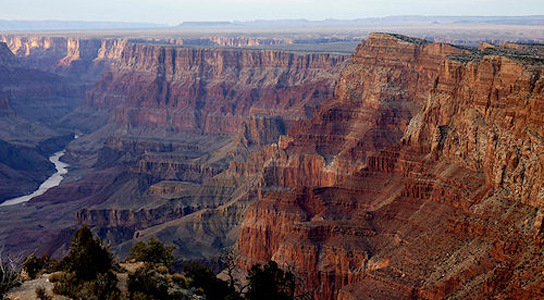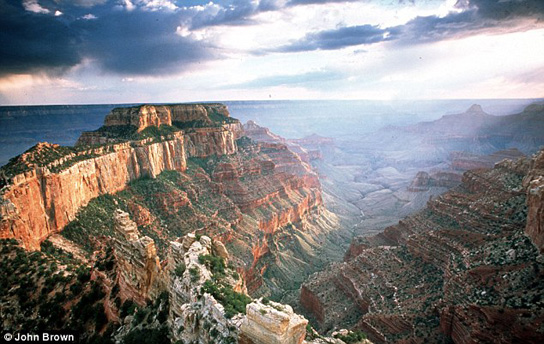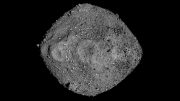
New analysis suggests the Grand Canyon formed about 70 million years ago during the late Cretaceous Period. Credit: Photo by Flickr/MarkusNL
A new analysis of the mineral grains from the bottom of the Grand Canyon indicates that it was formed about 70 million years ago, during the late Cretaceous Period, a time when dinosaurs roamed the Earth.
The scientists published their findings in the journal Science. This new research pushes back the date for the formation of the Grand Canyon in Arizona by more than 60 million years, states Rebecca Flowers, from the Colorado University at Boulder. The team used dating methods that exploited the radioactive decay of uranium and thorium atoms to helium atoms in apatite, a phosphate mineral.

Credit: Photo by John Brown
The helium atoms were locked in the mineral grains as they cooled, and moved closer to the surface during the Grand Canyon’s formation, Flowers continues. Temperature variations at shallow levels beneath the Earth’s surface are influenced by topography and the thermal history recorded by these grains allowed the team to infer how much time had passed since there was any significant natural excavation.
A variety of data suggests that the Grand Canyon has a complicated history, and that the entire modern-day canyon might not have been carved at the same time. Different canyon segments could have evolved separately, coalescing into its current structure.
In 2008, Flowers and her colleagues showed that parts of the Grand Canyon had developed 55 million years ago. The canyon is over 1.6 km (1 mile) deep, 451 km (280 miles) in length, and 29 km (18 miles) wide in certain places. It was probably carved in large part by an ancestral waterway of the Colorado River, flowing in the opposite direction millions of years ago.
When temperatures of the apatite grains are higher than 70˚C (158˚F), no helium is retained in it whereas if temperatures are below 30˚C (86˚F), all of the helium is retained. This technique allowed the scientists to detect variations in the thermal structure at shallow levels of the Earth’s crust. The variations are induced by the topography of the region, allowing the researchers to constrain to a timeframe when the Grand Canyon was incised.
The scientists analyzed the spatial distribution of helium atoms near the margin of individual apatite crystals. This gave them additional information about whether the rocks had a rapid cooling or slow cooling history.
Many conventional models have put the Grand Canyon’s age at 5 million to 6 million years, however, conflicting information has caused uncertainty in many estimates.
Reference: “Apatite 4He/3He and (U-Th)/He Evidence for an Ancient Grand Canyon” by R. M. Flowers and K. A. Farley, 29 November 2012, Science.
DOI: 10.1126/science.1229390









Be the first to comment on "Grand Canyon Thought to Be 65 Million Years Older Than Previous Estimates"